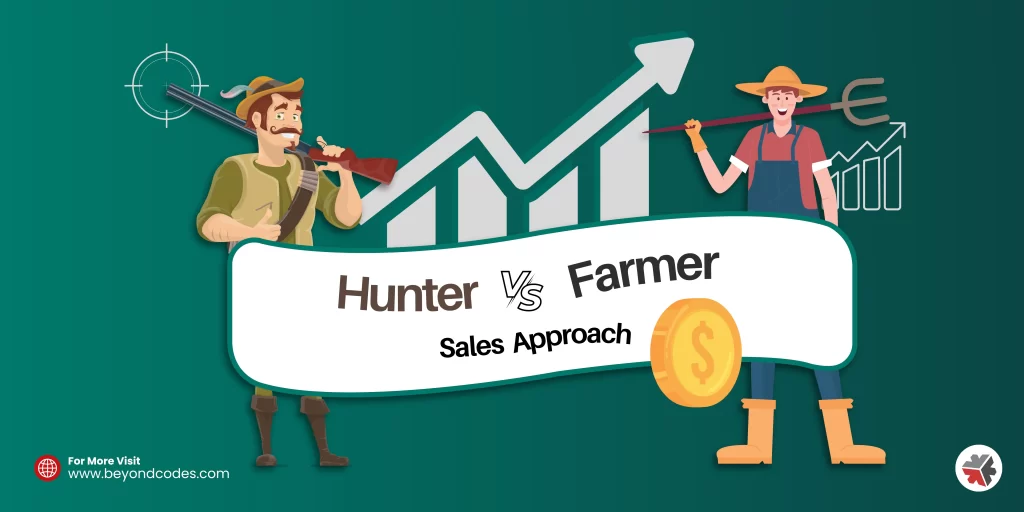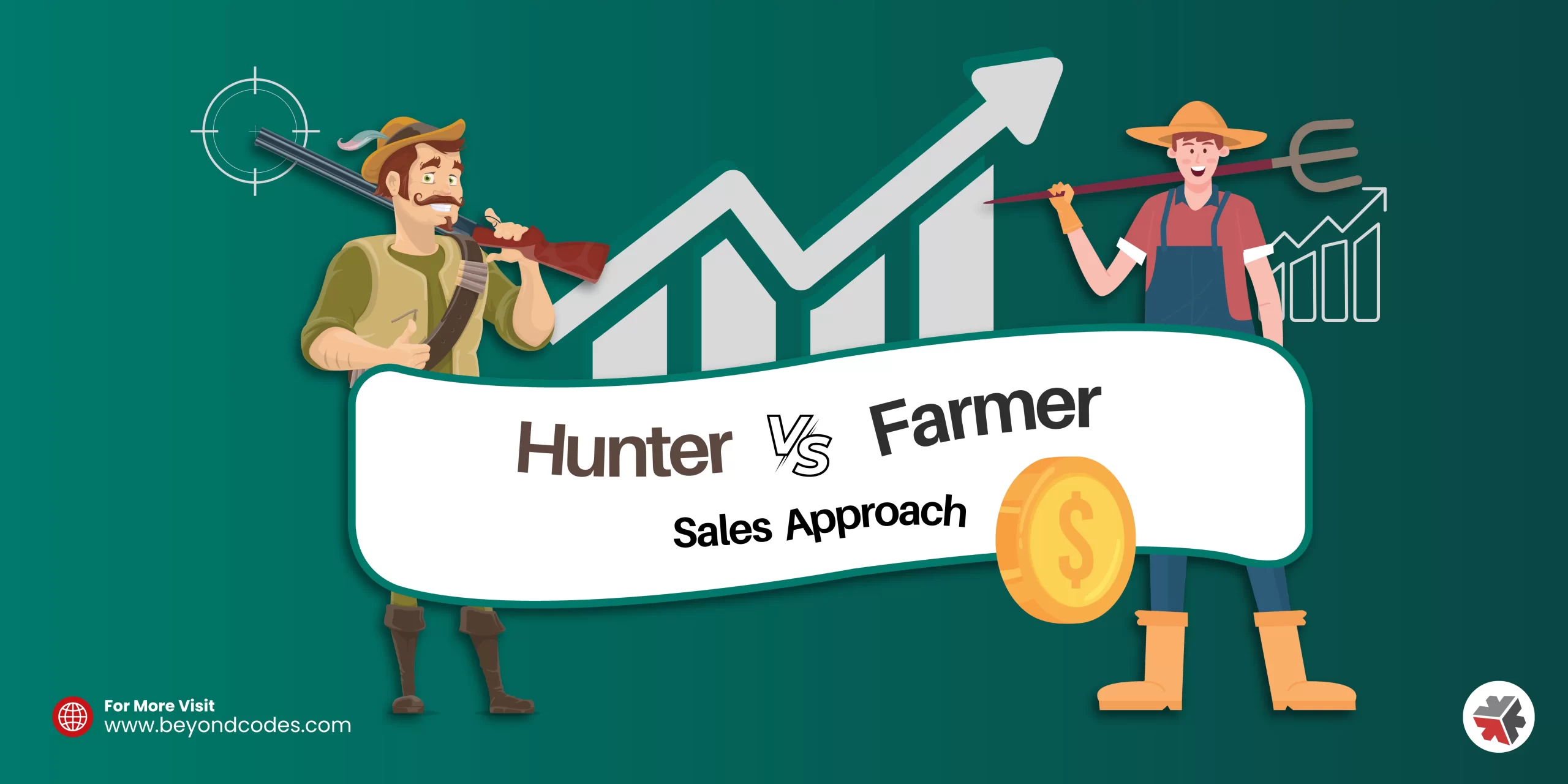If you have ever managed or built a B2B sales team, you’ve probably faced this question:
Should we double down on acquiring new clients or focus on nurturing the ones we already have?
This is where the traditional Hunter vs. Farmer sales strategy comes in.
This model has been in use for decades, and for good reason—it continues to be effective. Especially in a world where B2B buyers take longer to convert, involve multiple stakeholders, and demand personalization from Day 1.
The reality? Selecting one over the other is not the point. It’s about knowing when to hunt and when to farm—and building a sales team that can do both effectively.
In B2B lead generation—especially when it comes to cold calling and setting B2B appointments—having a good mix of Hunters and Farmers on your team isn’t just nice to have, it’s a must.
This article explains the model’s operation, its significance, and how to combine the two to build a successful sales engine.
The Hunter: Your Pipeline Builder
Hunters are the SDRs who thrive on cold calling, qualifying B2B leads, and setting appointments with new prospects. They live for the thrill of the chase and are focused on outbound motion.
Key Traits of a Hunter:
- Proactive: They don’t wait for leads to come in. They hunt them down.
- Resilient: Rejections don’t faze them. They bounce back fast.
- Fast-Paced: They move quickly through lists, qualifying leads with precision.
- Persuasive: They know how to get attention in a cold call within the first 10 seconds.
In the context of cold calling and appointment setting: Hunters are the ones dialing 80+ calls a day, navigating gatekeepers, and setting the stage for larger conversations. They know when to push, when to pivot, and when to pause.
Strategies for Success:
- Use trigger events (funding, hiring, expansion) to personalize outreach
- Focus on high-intent ICPs using tech stack and job role filters
- Lead with value—not desperation
The Farmer: Your Revenue Nurturer
While hunters win new business, farmers ensure none of it goes to waste.
Farmers are relationship-focused and detail-oriented, excelling at maintaining accounts’ engagement after initial contact. They help your clients see value continuously.
Key Traits of a Farmer:
- Patient and Attentive: They listen more than they speak.
- Client-Centric: Their north star is customer success and retention.
- Strategic: They know how to turn a single appointment into a long-term partnership.
- Growth-Focused: Farmers spot upsell and cross-sell potential, contributing to steady account expansion over time.
In an SDR setting: Farmers may step in post-appointment, during follow-ups, or for long-term opportunities that need nurturing before conversion. In outbound teams, they handle mid-funnel engagement with thoughtful touchpoints.
Strategies for Success:
- Send relevant content that addresses known pain points
- Share case studies or updates related to the prospect's industry
- Keep nurturing sequences active but value-driven
Why You Need Both: A Balanced Sales Ecosystem
You can’t scale a business with only one type of salesperson.
Hunters are the spark; they fill your pipeline with new logos, start new discussions, and hunt new prospects.
Farmers are the engine’s fuel; they maintain momentum by nurturing relationships and making sure your hard-won customers stick around.
If you’re only hunting, you’ll burn out your sales reps. If you’re only farming, your pipeline dries up. That’s why in B2B lead generation, especially when SDRs are actively cold calling and setting appointments, a balanced team isn’t optional—it’s necessary.
“The real strength of a sales team doesn’t lie in choosing between hunters and farmers—it’s in knowing when to chase new ground and when to nurture what you’ve built. Balance isn’t optional, it’s essential.”— Gaurav Kumar, CEO at Beyond Codes Inc.
Here’s the step-by-step guide to building the right mix of your sales team:
Step 1: Identify Your Business Needs
Before assigning roles or hiring new SDRs, ask yourself:
What does your current pipeline look like?
- Launching into a new region or vertical? You need Hunters—SDRs who are fearless on the phones, know how to break through the noise, and thrive on first conversations.
- Focusing on account expansion, upsells, or renewals? You need Farmers—SDRs who are patient, strategic, and skilled at maintaining a warm and engaged relationship.
Pro Tip: Your sales focus can shift quarter by quarter, so revisit this step regularly.
Step 2: Hire for the Role, Not Just the Resume
Just because someone has sales experience doesn’t mean they’re the right fit for every sales role.
For Hunters, look for:
- High energy and curiosity
- Resilience (cold calling rejection is real!)
- Goal-crushing attitude and urgency to win
- Creativity in outreach—can they personalize a pitch on the fly?
For Farmers, look for:
- Empathy and emotional intelligence
- Process-oriented thinking
- Strong follow-up and active listening skills
- The ability to spot upsell or cross-sell opportunities naturally
Pro Tip: A great SDR knows their strength. Hiring with clear roles helps you set them—and your pipeline—up for success.
Step 3: Train Separately, Align Together
A Hunter and a Farmer shouldn’t go through the same onboarding or sales training. Their days look different. Their challenges are different. So are their success metrics.
Hunters need training in:
- Prospecting techniques and ICP research
- Crafting cold call openers that don’t sound like cold calls
- Handling objections without scripts
- Using urgency without being pushy
Farmers need training in:
- Post-meeting follow-ups and pipeline nurturing
- CRM hygiene and workflow automation
- Reading buying signals and customer behavior
- Building trust across multi-threaded relationships
But here’s where alignment comes in:
Both need to understand the entire customer journey.
Pro Tip: A well-trained SDR knows when to hunt, when to farm—and when to shift gears.
Also read, B2B Lead Nurturing: The Ultimate Guide to Expand Your Business
The ROI of the Hunter-Farmer Model in B2B Lead Gen
- Increased Conversions: Hunters bring more qualified meetings. Farmers help turn them into revenue.
- Reduced Churn: A nurtured lead is less likely to ghost. Farmers keep them engaged.
- Faster Ramp Time: Specialization enables SDRs to master their role more quickly.
- Clearer Forecasting: Defined roles result in clearer pipeline stages.
Mistakes to Avoid
- Expecting one person to do both jobs well. Rarely happens.
- Failing to share learnings between hunters and farmers. Cross-training can boost results.
- No alignment between SDRs and closers. Make sure AEs and SDRs meet regularly.
Final Thoughts: Stop Guessing, Start Structuring
Most pipeline problems aren’t about effort—they’re about mismatch.
An SDR targeting enterprise clients needs a different approach than one reactivating inactive leads.
When you define who’s your hunter and who’s your farmer, you give your team the clarity to perform, the training to improve, and the motivation to win.
At Beyond Codes, our hunters focus on opening new opportunities while our farmers nurture and grow existing relationships—working in sync to ensure every quality lead moves seamlessly toward closure.
Struggling to scale pipeline with your current SDRs? Let’s fix that!
Author
-
With 7+ years of experience and a background in media & communication, she brings stories to life that fuel lead generation success. She transforms complex B2B ideas into content that is clear, engaging, and results-driven—helping key decision-makers take action. A good cup of coffee fuels her writing ideas, and when off the clock, she enjoys unwinding with her dog by her side.








